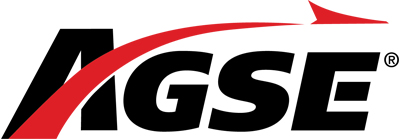
AGSE-Westmont Commends GE Aviation for a Half-Century of Excellence with its CF6 Engine!
AGSE-Westmont, the global leader in the original design and manufacture of innovative aerospace ground support equipment, aircraft tooling, and high-quality specialty industrial equipment, applauds GE Aviation on reaching yet another milestone as its CF6 high-bypass turbofan engine enters 50 years of service. Originally developed for the first McDonnell Douglas DC-10 aircraft, the CF6 steadily evolved to power longer-range flights for both commercial and military aircraft, including the Airbus A310, the Boeing 747-400, and the Lockheed C-5M Super Galaxy. Despite younger GE programs currently replacing it on some newer variant passenger aircraft, the CF6 recently experienced a surge of flight cycles for long-haul freight operators as demand for express delivery spiked during the height of the COVID pandemic. New CF6s, along with a dedicated network of qualified MRO services, carry on the legacy of GE's cornerstone wide-body engine by powering aircraft not limited to the latest Boeing 767s, the Airbus A330, and possibly the Antonov An-124 freighter.
Since the early stages of the CF6 program, GE has recommended AGSE's robust offering of GSE & Tooling solutions for the handling of these engines by airlines, aircraft hangars, and engine shops. Westmont, AGSE's parent company, has also maintained a successful track record of installing gantry systems used for the horizontal assembly of this engine and other GE platforms at multiple GE Aviation production facilities around the world. Like the CF6, these highly durable solutions can accommodate an extensive range of applications, from supporting quick engine change procedures to the highest maintenance levels of engine disassembly.
AGSE-Westmont is proud to have remained a trusted and reliable partner of GE Aviation throughout the development of its CF6 program and will continue to provide the necessary ground support equipment and technical services to keep these prominent workhorse engines in the air for decades to come! Click here to read the full story.


